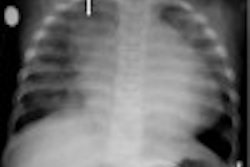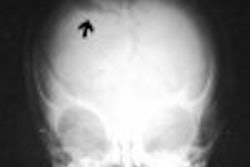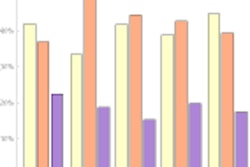An effort by radiologic technologists in San Francisco to raise public awareness about understaffing and radiographic equipment failures at the city's only Level 1 trauma center may have achieved its goal -- but at a high cost to the RTs involved.
One leader of a weekend "sickout" at San Francisco General Hospital killed himself Monday evening, hours after a meeting in which he and other RTs were told they would face discipline and possible dismissal from their jobs for the unauthorized labor action.
Kenneth Gilmore had worked at SFGH for more than 20 years and was passionate about bringing attention to many longstanding and unanswered concerns about the hospital, according to Greg Corrales, a coworker and de facto spokesman for SFGH's 50 or so radiologic technologists.
An SFGH spokesman said Gilmore's suicide was a shock to hospital staff, especially those in radiology, but that any connection to the disciplinary meeting was speculation at this point.
"None of us actually knows what happened, other than that it's a big loss for us," said Anson Moon, acting assistant to the hospital's executive director.
The RT sickout began Thursday afternoon and continued until midnight Saturday, causing the city's director of public health to declare an emergency. The emergency declaration then allowed the city to contract out for replacement registry techs.
No patient deaths were attributed to the sickout, although the potential was there, noted Richard Hollingsworth, director of radiology for the hospital.
All of the RTs who called in sick over the three-day period received certified-mail letters Tuesday informing them that their sick leave was denied, and that any further sick leave usage would be denied until further notice.
The RTs must also attend an investigative meeting that could result in disciplinary action against them. The letter notes that "City Rules prohibit strikes by City employees," and that employees who strike are subject to termination.
But Hollingsworth said Tuesday that the reference to dismissal was boilerplate language included in all disciplinary letters, and that he did not expect any RTs to lose their jobs.
Hollingsworth also acknowledged that dismissing RTs would be counterproductive, since the hospital already faces a noteworthy shortage of such staff.
The sickout was intended to highlight issues that are affecting many RTs nationwide, such as inadequate staffing levels and on-the-job injuries. Other issues, such as noncompetitive pay and broken-down equipment, may be more particular to government-owned urban facilities like SFGH, which also serves as a teaching facility for UCSF physicians.
The hospital's RTs organized the job action after learning that a 7.5% pay cut they took in 2002 -- along with other unionized workers employed by the cash-strapped City and County of San Francisco -- would likely be continued.
Pay for technologists at SFGH currently tops out at $30.50 per hour, which is from 8% to 20% below what is paid by other facilities in the San Francisco Bay Area. All RT shifts at the 24/7 facility have been 20% to 25% below the minimum staffing levels set by SFGH management for several years, according to technologist Corrales.
The hospital has been covering its needs by paying around $80 per hour for traveling RTs who get their room, board, and transportation covered along with hourly wages, according to Corrales.
Given the nationwide RT shortage and the salaries paid by SFGH, it's not surprising that the hospital has hired only one RT in the last two years while losing many others, said Corrales, who is leaving SFGH for a better salary at another San Francisco facility.
"It seems like simple math: you stop paying overtime and registry and increase the base pay, and people come because they want to work there," Corrales said.
Even before the RTs staged their wildcat action, there was widespread support among the hospital's administrators and city health department officials for raising technologists' pay, Hollingsworth said.
"There were various proposals, but because of the city's difficulties they had to be analyzed very carefully, more information was being requested, but all of it was an attempt to find something that would work," Hollingsworth said.
Any negotiations are complicated by the fact that the RTs are part of the Service Employees International Union local 790, which also represents a number of unskilled workers who don't share the RTs' job issues or opportunities.
Many RTs have remained at SFGH despite the pay, said Corrales, noting that he was only halfway up the seniority list after 13 years with the hospital.
"We love it there," Corrales said. "It's a public hospital, it's a unique setting, it's a trauma setting. We take care of the poorest of the poor, we take care of the medically indigent, we take care of the homeless. We are the last resort for many of the citizens of San Francisco. That's why we're there, because we really make a difference."
But SFGH is also a disaster in the making, Corrales said, because city budget constraints have also prevented the hospital from replacing much of its aging radiographic and interventional equipment.
"There's just not enough equipment for the patient volume," Corrales said. "If there was any kind of major catastrophe in San Francisco, we would not be able to handle it. We can barely handle a Wednesday afternoon."
The nearest Level 1 trauma center that doesn't involve crossing the Golden Gate or Bay bridges is the Stanford Medical Center, located some 30 miles south on a densely populated peninsula.
Corrales also blames aging equipment for some of the numerous job-related injuries suffered by techs moving x-ray tubes.
Before learning of the possible disciplinary actions and Gilmore's suicide, Corrales was optimistic that hospital management actually welcomed the sickout as a wake-up call to San Francisco City Hall, which controls SFGH's funding.
Now, his optimism regarding the city's response has faded.
"They don't want to solve the problems with the hospital," Corrales said. "They just want to intimidate us and literally scare us to death."
By Tracie L. Thompson
AuntMinnie.com staff writer
May 5, 2004
Related Reading
Study finds x-ray techs plagued by ergonomic stressors, February 11, 2004
RTs are already tackling advanced tasks, survey says, August 15, 2003
ASRT opposed to changes in overtime rules, July 21, 2003
Shortage of nuclear medicine technologists shows no signs of abating, July 11, 2003
Copyright © 2004 AuntMinnie.com



















